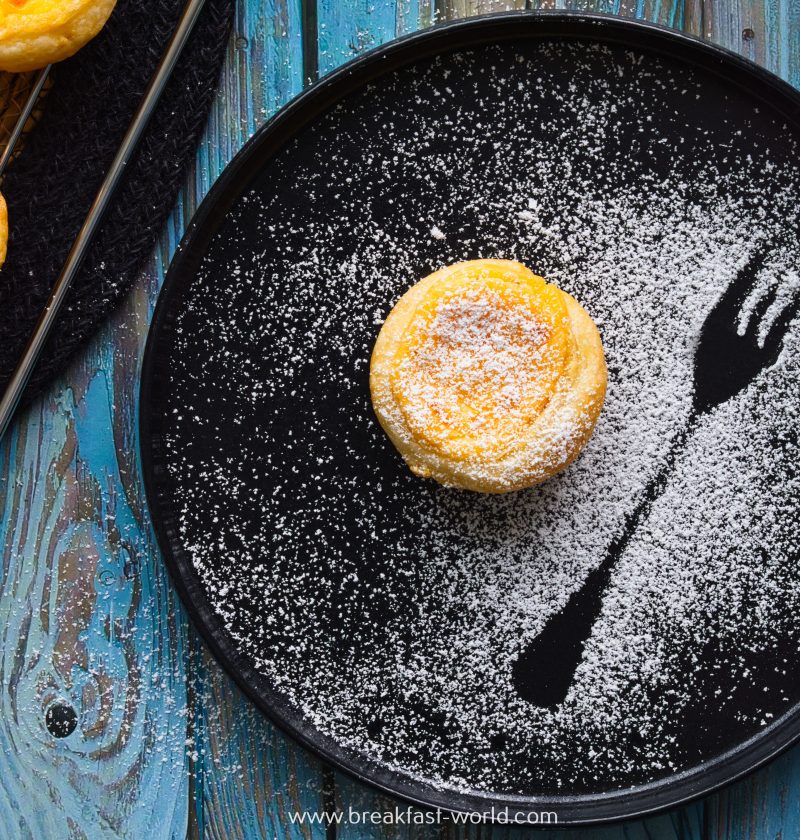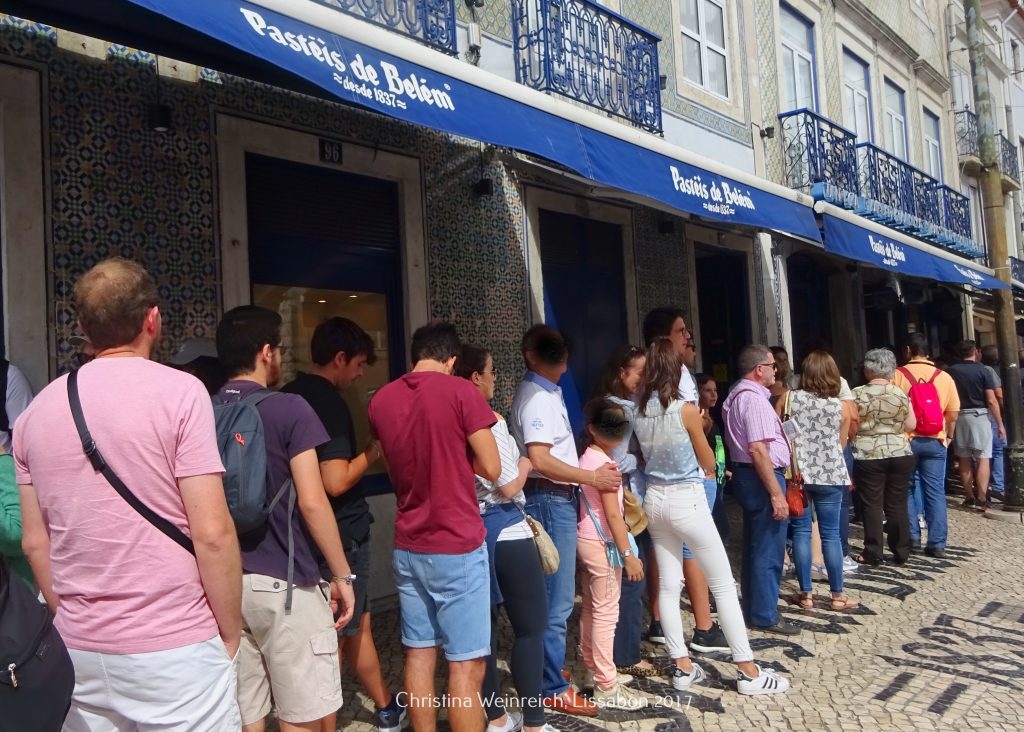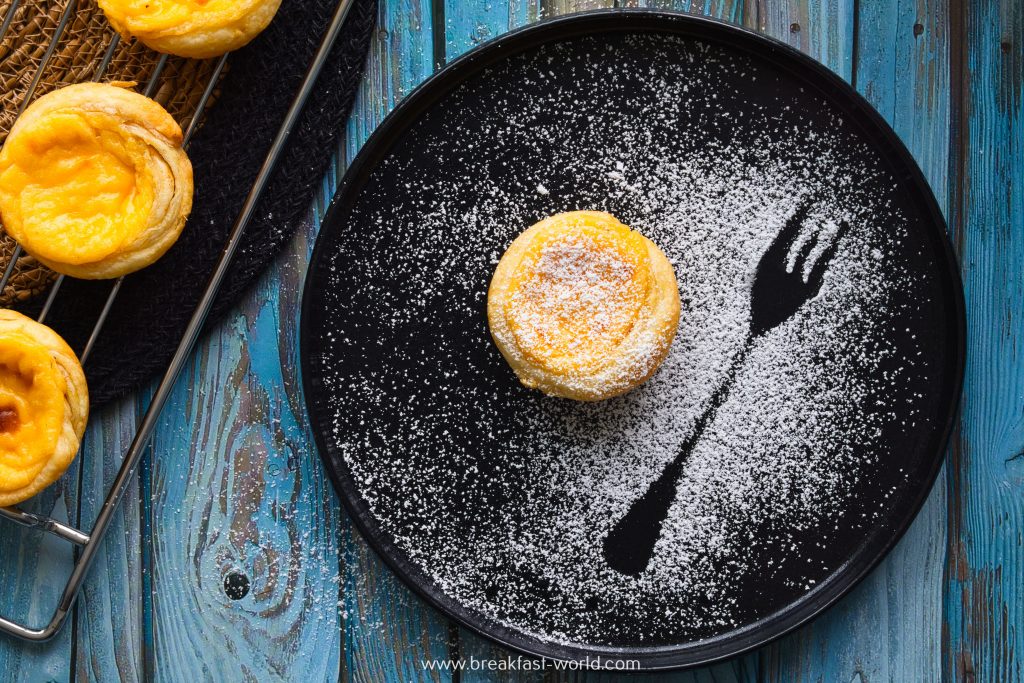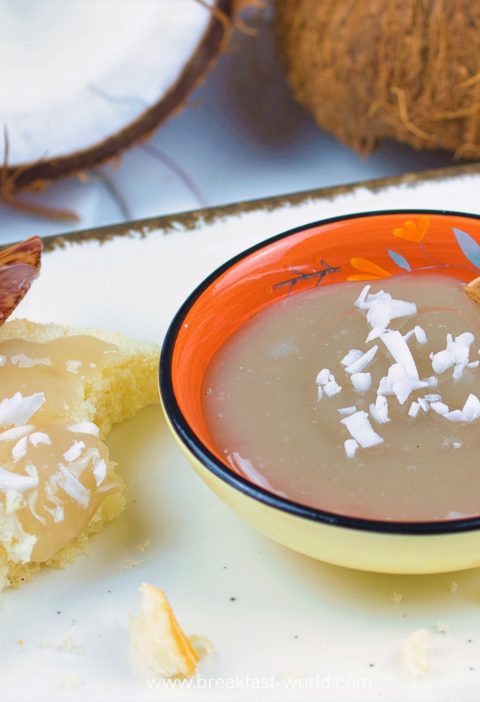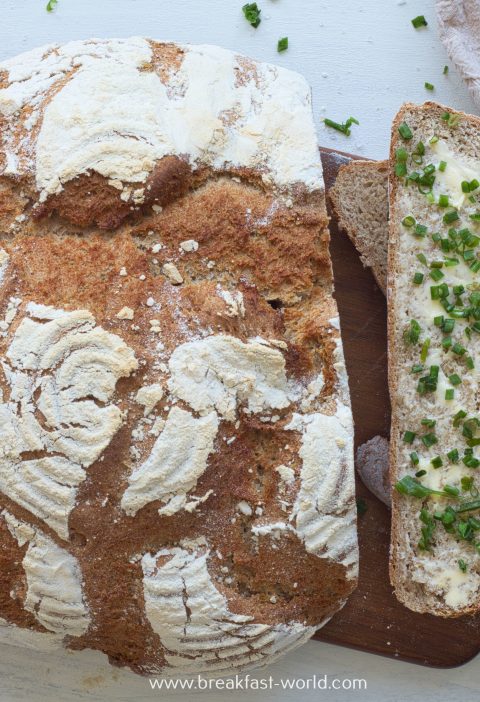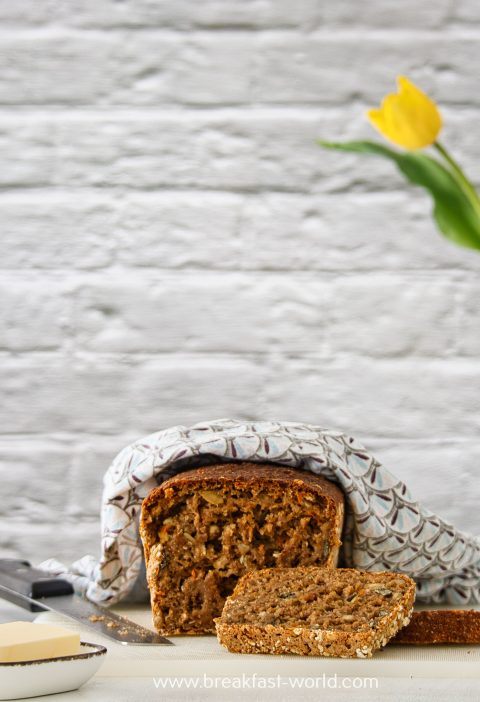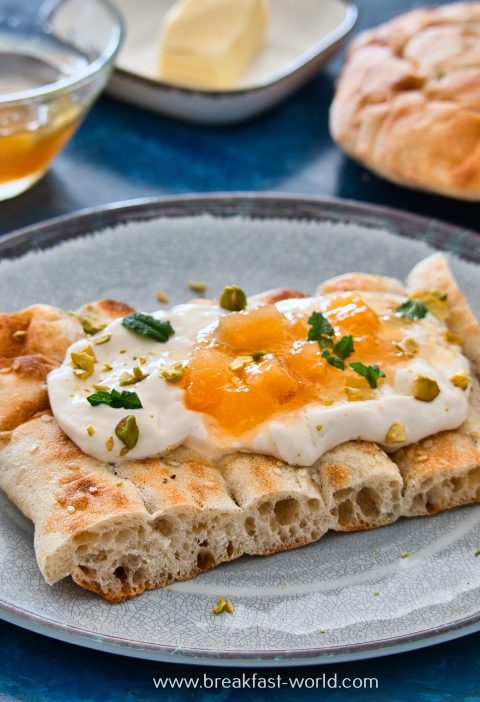Pastéis de nata are small puff pastry tarts filled with custard cream. In Portugal they are usually served for breakfast. Be careful: They are so delicious that they are addictive!
Jump to Recipe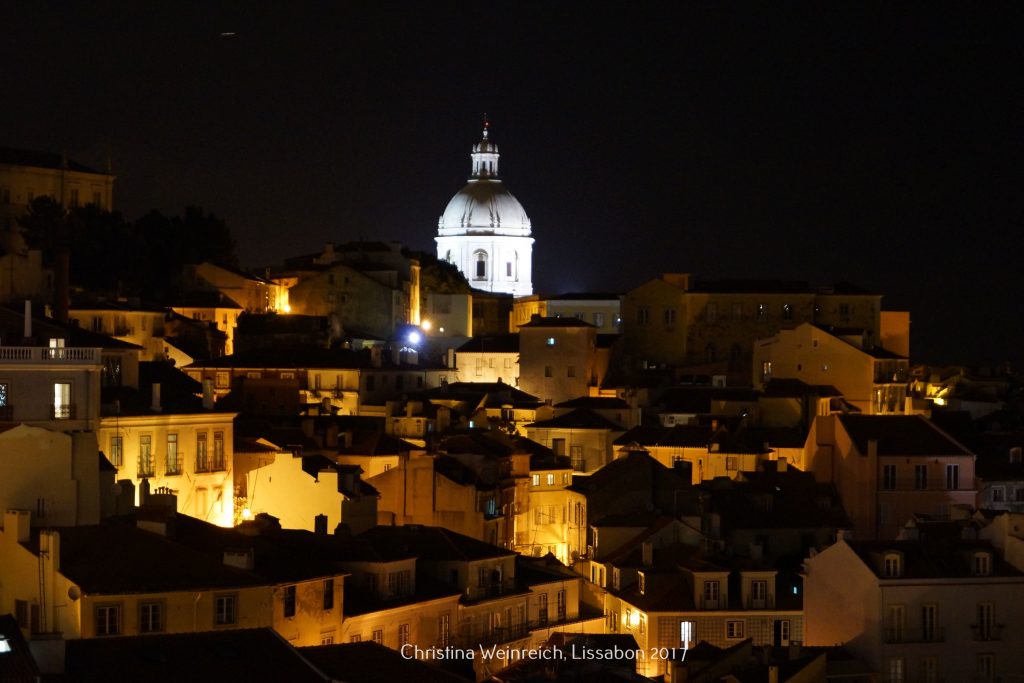
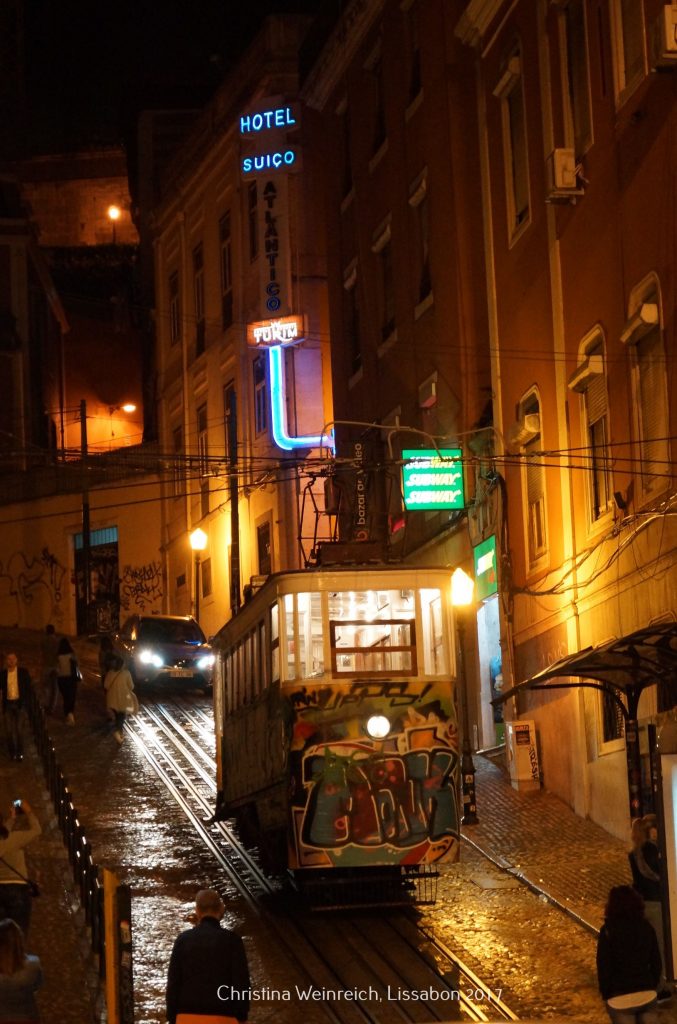
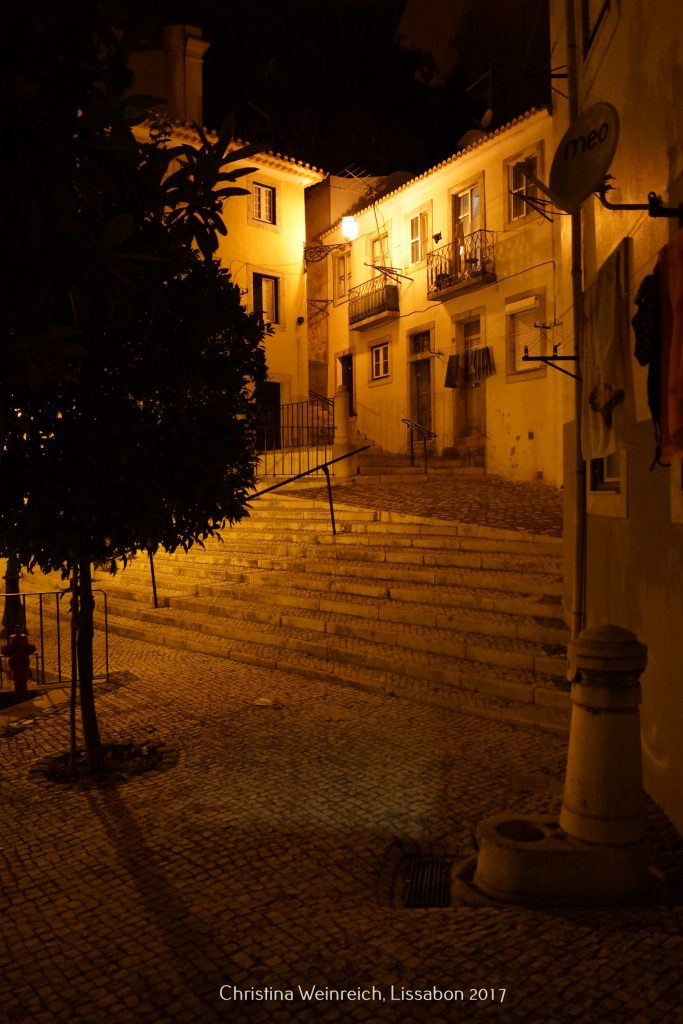
I ate pastéis de nata first time during my city trip to Lisbon and fall immediately into love with them! The pastries can also be bought in Germany. But they taste much more better in Portugal. Moreover, you can easily bake pastéis de nata by yourself. Before I tell you the recipe, first some general information about the Portuguese breakfast and the delicious puff pastry tarts.
Breakfast in Portugal
As in many southern European countries, breakfast in Portugal is rather small. Many Portuguese have breakfast on the way to work in a café or bakery (Pastelaria).
Toast with jam or ham and cheese, alternatively a roll or croissant, plus a coffee (milk coffee: galão or espresso: bica) or freshly squeezed orange juice is sufficient. If you prefer a hearty breakfast, take an omelet with chorizo sausage.
Around 11 a.m. there is a second breakfast, which is usually served with sweet pastries. Bola de Berlim is a kind ofa german Berliner (or: Pfannkuchen, Kreppl) that is cut open, filled with lots of vanilla cream and sprinkled with sugar.
Salame de chocolate looks like black pudding, but consists of chocolate, biscuits and eggs.
There are also sweet milk rolls with coconut topping, pão de deus or sponge cake pão de pó.
The selection is huge and varies depending on the region. But the very best are pastéis de nata, the puff pastry tarts filled with custard cream!
Pastéis de Nata
Pastéis de Nata (singular: Pastel de Nata) are also known as Pastéis de Belém in the Lisbon area. It's been around since 1834.
History
And this is the history: In the course of the "liberal revolution" of 1820, all convents and monasteries in Portugal were closed in 1834.
To survive, the monks from the Mosteiro dos Jerónimos monastery in Belém invented and offered sweet pastries for sale. The pastries quickly became known as "Pastéis de Belém".
At that time, Belém was still far from the city of Lisbon and was mainly reached by steamboats. The monastery and the "Torre de Belém" (Belém Tower) attracted many visitors from the city, who enjoyed the delicious pastries from the monastery.
Right next to the monastery was located an old sugar cane refinery. In 1837 pastry chefs began to bake "Pastéis de Belém" according to the old "secret recipe" of the monastery. The original recipe was only handed down to the pastry chefs, who made the pastries by hand in a "secret room". The recipe remains unchanged to this day.
Since then, the pastéis de Bélem have been made by the Pasteleria „Pastéis de Belém“ and are still sold in the shop.
Of course, the Pasteleria continues to guard the original recipe. A visit there is mandatory! The tarts are popular with locals and tourists alike. There are often long queues in front of the café, especially on weekends.
And the staff has lot of work to do:
Where can I buy pastéis de nata?
In Portugal you can buy them in every pasteleria and in every shop that offers something to eat. You can also buy pastéis de nata in the supermarket. In Germany I have already found them in Portuguese grocery stores, sometimes also in cafés.
How are they made?
You can also simply bake pastéis de nata yourself. A baking pan (Muffin tin) is lined with puff pastry dough, filled with vanilla cream or pudding and then baked in the oven. The dark spots on the cream are characteristic of the pastry.
How do pastéis de nata taste best?
The homemade ones taste "almost" as good as the original ones from the Pasteleria "Pastéis de Belém".
They taste best warm straight from the oven pure or sprinkled with cinnamon and/or powdered sugar.
Classically, you drink a coffee or espresso or milk coffee with it.
Well, now it's time to bake! I wish you a lot of fun and Bom apetite!
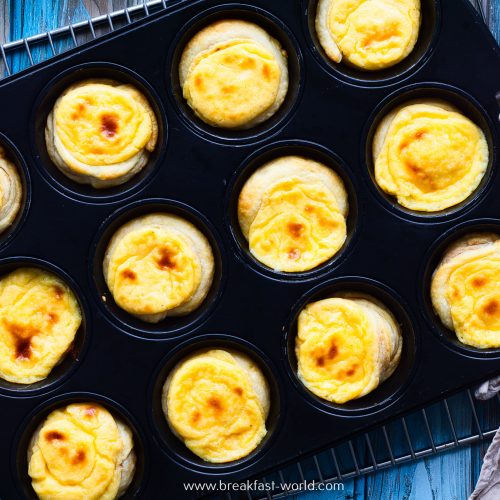
Pastéis de Nata
Zutaten
- 1 pack puff pastry (approx. 275 g; from the refrigerated section)
- 1/3 tsp. cinnamon powder
- 30 g wheat flour
- 150 ml milk
- 4 egg yolk
- 150 ml cream
- 100 g sugar
- 2 package vanilla sugar (alt.: scraped pulp of a vanilla bean)
- 1 pinch salt
- Butter for greasing
- icing sugar (for sprinkle)
- Cinnamon for sprinkling (optional)
Anleitungen
- Take the puff pastry out of the fridge about 10 minutes before use so that it does not break when unrolling.
- Grease a muffin tin.
- Unroll the puff pastry and sprinkle evenly with cinnamon, then roll up from the short side.
- Cut the roll into 12 equal pieces.
- Place each piece of dough on the cut surface and gently flatten it with your hand until it is slightly larger than the bottom of a muffin tin.
- Place the pieces of dough in the deepening and press the edges up a little if necessary. The dough should reach up to approx. 1 cm below the upper edge of the deepening. Don't enclose air bubbles.
- Mix flour and 4 tablespoons milk until smooth. Stir in the egg yolks.
- Put the remaining milk and cream in a saucepan. Stir in the egg yolk mixture, sugar, vanilla sugar and a pinch of salt.
- Heat the mixture, stirring, until steaming, but not boiling. Keep stirring at this temperature until the mixture thickens.
- Preheat the oven to 230° top/bottom heat.
- Fill each puff pastry mold with approx. 1 - 2 tablespoon of vanilla cream.
- Bake the pastéis de nata in the oven (middle) for 13-15 minutes until the cream gets a few dark spots.
- Take the tin out of the oven and let them cool down a bit.
- Important note: The filling rises during baking, but sinks again later.
Notizen
If you like this post, I look forward to a rating (star bar) or a nice comment!
Thanks a lot!
Perhaps you would also like to subscribe to my page. If so you will be regularly informed about new posts.

